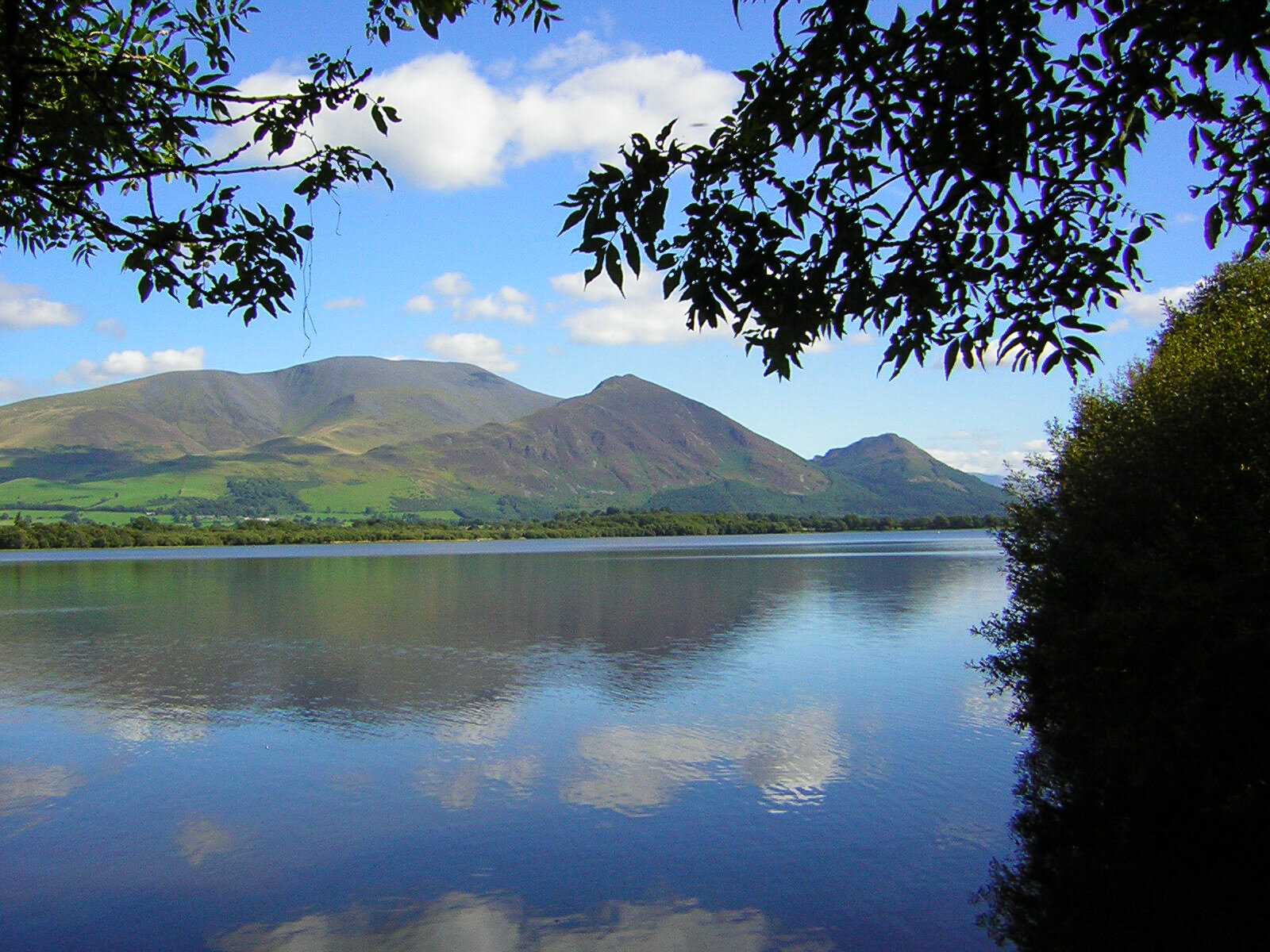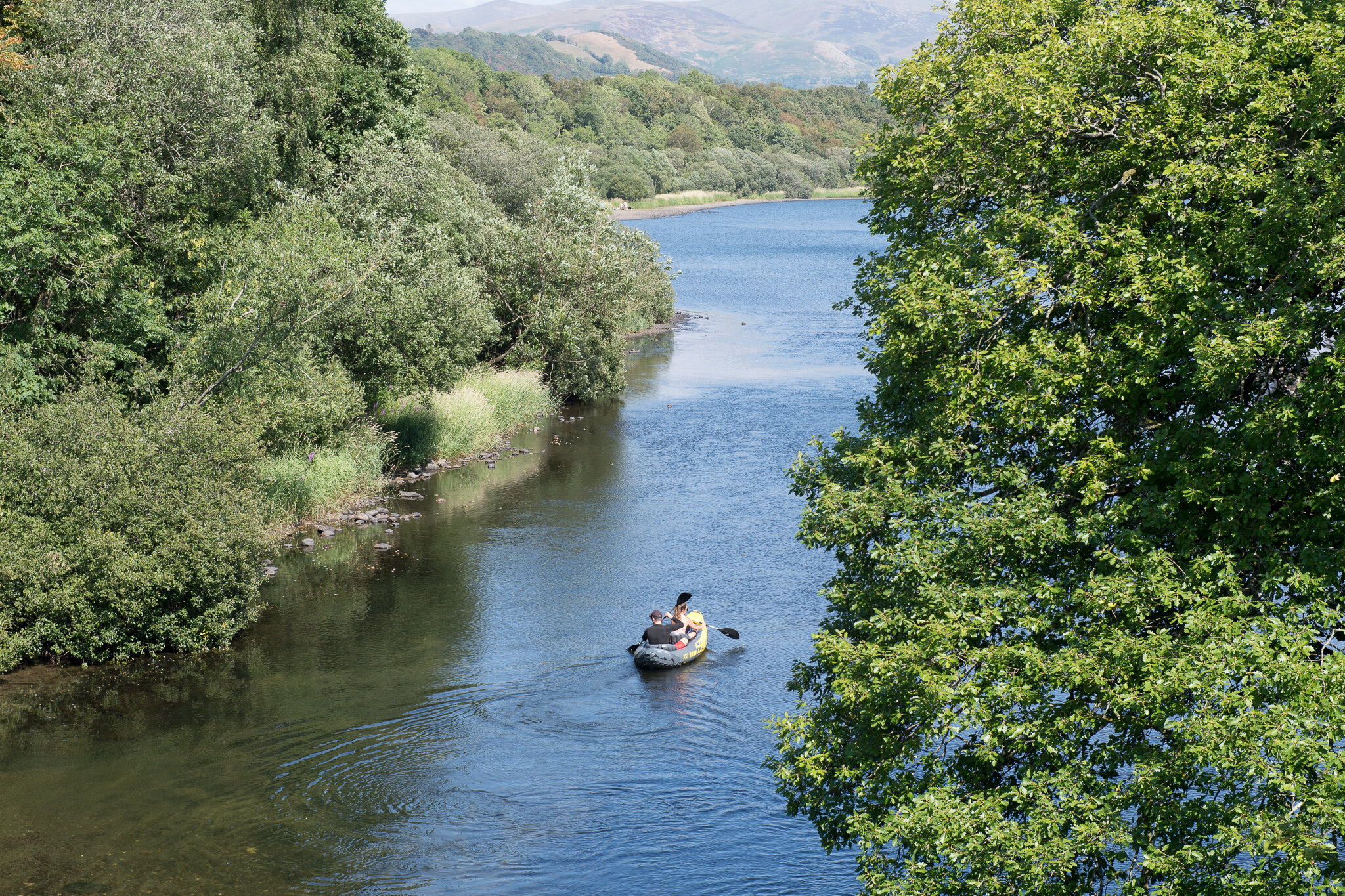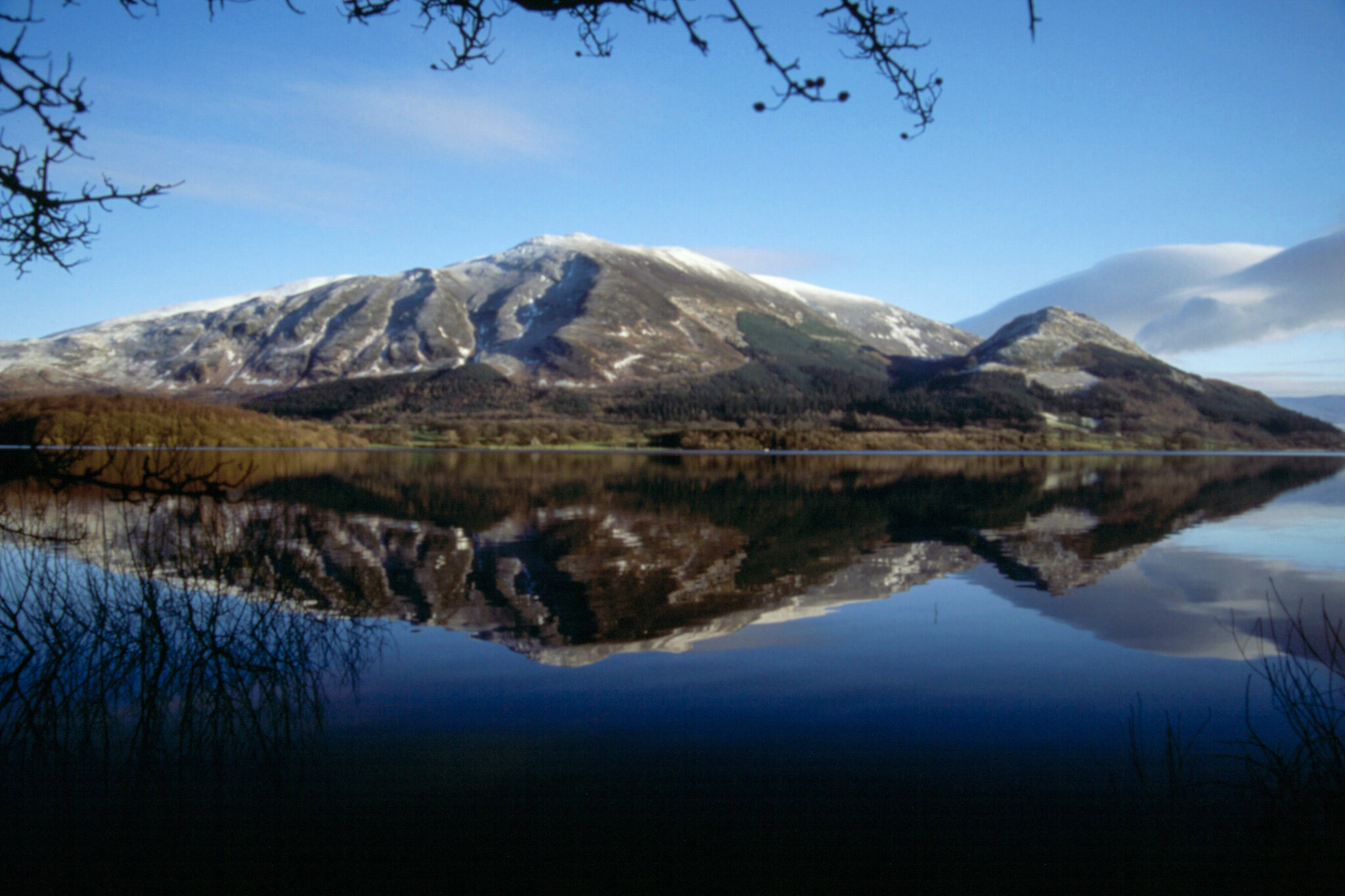Bassenthwaite Lake
Bassenthwaite is not one of the more popular lakes, as it is on the northern edge of the national park away from the tourist hotspots of Ambleside and Windermere. The lake is set amongst stunning scenery at the base of the mighty Skiddaw mountain range.
When I moved to the Lakes District 35 years or so ago, some of my local colleagues used to question me about how many lakes there were in the Lake District. I would try to name them but it was a trick question. There is only one lake in the Lake District, Bassenthwaite Lake - the others are all meres, waters or tarns.
Bassenthwaite Lake, or Bass Lake, is the most northerly of the lakes and one of the largest at approximately 4 miles long by ¾ mile wide, although it is a shallow lake at only 20m (70ft) deep.
Skiddaw across Bassenthwaite Lake from B2591
Bassenthwaite is not one of the more popular lakes, as it is on the northern edge of the national park away from the tourist hotspots of Ambleside and Windermere, but it does offer a number of excellent walking trails and easily accessible parking locations giving access to the lake shores. The Skiddaw mountain range forms the backdrop for the eastern side of the lake, rising up from the lakeshore along most of its length. On a calm day you can get wonderful reflections of the mountains in the waters of the lake. The lake is filled and drained by the River Derwent (from Derwentwater) and it is thought that at one time Bassenthwaite Lake and Derwentwater were one large lake that has been split by silt and sediment brought down from the hills.
Canoeing along River Derwent into Bassenthwaite Lake
Bassenthwaite Lake is also a very important place for wildlife. The unique vendace fish can also be found in the lake alongside more common species such as roach, trout, pike, perch, minnow, dace, ruffe and eell. Atlantic salmon also come to Bassenthwaite Lake to spawn.
Snow capped Skiddaw across Bassenthwaite Lake from A66
For wildlife photographers, ospreys have become regular summer visitors feeding on the lake while nesting at Whinlatter Forest above Bassenthwaite Lake . A television link can be seen at the Whinlatter Forest Visitor Centre and there is an Osprey observation point across the lake in Dodd Wood. Cormorants and herons can also be found fishing on the lake. The Lake District's first ever wetland nature reserve is situated at the northern end of Bassenthwaite Lake, the Dubwath Wetland Nature Reserve where there are grasshopper warbler, curlew, greylag, geese, reed bunting and meadow pipit. This 10 hectare site incorporates a 650m gravel path linking to 900m of recycled plastic boardwalk. These routes are designed to provide access to viewing points and bird hides.
The main A66 trunk road runs along the western side of the lake. There are a number of laybys alongside Bassenthwaite where you can park for free although these can become busy. In addition you can take the B5291 off the A66 at the northern end of the lake and park at Banks Point. The A591 runs along the other side of the lake and here you can find Dodd Wood, with pay and display parking available. There are a number of other areas to park near to the lake..
Getting There:
The lake is accessible from the A66 trunk road between Penrith (Junction 40, M6) and West Cumbria. From the east, head towards Keswick and then continue on towards Cockermouth. The A66 becomes dual carriageway alongside the northern part of the lake with wide inaccessible central reservations so it is much easier, and safer, to continue past the lake and turn around to approach it from the west.
There are a number of laybys along the side of the lake for parking. Alternatively turn off the A66 onto the B5291 at the north of the lake and park at Banks Point for views along the length of the lake.
The eastern shore of the lake is accessible in places from the A591 (from the roundabout at Keswick, signposted Carlisle and Mirehouse) and you can park at Dodd Wood for its visitor centre and osprey viewing platform.
Banks Point Grid Ref: NY 202 319
Dodd Wood Grid Ref: NY 235 281



